Note: If you’re wondering where the above image is from, it’s the cover for Scream Factory’s upcoming Blu-ray release of Silver Bullet. I didn’t even know about it until I started Googling Silver Bullet images for this article. Very cool to hear. Here’s a link.
As a werewolf fan, it pains me to admit the scarcity of truly good werewolf movies. There simply aren’t as many werewolf movies as vampire movies, and the truth is many of them just aren’t very good. In fact, there are so few really great ones, that just about any horror fan can quickly and easily name most, if not all, of them. The list always includes An American Werewolf in London (AWiL) and The Howling, and rightly so. More recently, many people frequently mention Dog Soldiers and Ginger Snaps. Many would include the original The Wolf Man, if only for its historical significance. I would agree that all of these are examples of good, even great, werewolf movies. However, much to my dismay, people mention Silver Bullet far less often.
I think Silver Bullet is not just an underrated werewolf movie, but an underrated movie, period. Despite good writing, good acting, genuinely frightening moments, and some nice touches of humor, it had a mediocre performance at the box office and consistently received poor to mediocre reviews. It is currently at 47% on Rotten Tomatoes, indicating a serious lack of critical reappraisal, even in the decades since its release.
I will admit that I have a lot of nostalgia for this movie, as I watched it many, many times as a kid. However, having viewed it several times as an adult, I think it still holds up. Why then has it been so unfairly maligned?
Exhibit Ebert
Here’s an example of what I’m talking about. I really liked and respected Ebert as a film critic, even when I didn’t agree with him, but I feel like he’s way off here. Don’t let the 3 stars fool you; this is a pretty scathing review: https://www.rogerebert.com/reviews/silver-bullet-1985
Why the Odds Were Against Silver Bullet
Playing it Straight
Despite the fact that the movie actually does a lot of things well (more on those later), it largely failed to connect with both audiences and critics. I attribute much of this to its somewhat oddball status in 1985. Silver Bullet was a straightforward, old-fashioned monster movie at a time when that wasn’t in style. It’s not winkingly clever like The Howling or AWiL. It’s not funny in the self-aware way that Fright Night and Return of the Living Dead (both 1985) are. It’s also not an effects-driven spectacle, as so many other horror movies of its time were. In 1985 alone Day of the Dead, Re-Animator, Nightmare on Elm Street 2, Demons, and The Stuff were all released. All these films relied heavily on practical effects and comedic elements in addition to the horror. Many of these films also had social or political undertones, which Silver Bullet decidedly doesn’t.
Instead, Silver Bullet is a small, dialogue-heavy movie. It’s essentially a drama about family and small-town America that also has a werewolf in it. It also plays it straight and doesn’t try to be ironic or clever. There’s humor in it (Gary Busey’s Uncle Red provides most of it), but the premise is never played for laughs. We’re meant to take it seriously, as the movie clearly does. At heart, it’s an earnest movie, a sentimental one, an optimistic one. It lacks the satirical and irreverent edge of many of the period’s popular horror movies. But it’s not going for that, so I don’t think it’s fair to criticize it for not doing something it never intended to do. The fact that it lacks the knowing, sardonic quality of so much 80’s horror is not surprising given it’s a Stephen King adaptation (adapted by King himself).
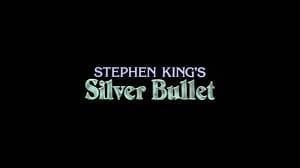
Not All Stephen King Adaptations Can Be Successful
Like this movie, King is at heart an earnest, sentimental, and optimistic storyteller, no matter how scary the stories he tells may be. Now, the popularity of King’s work is proof horror fans aren’t necessarily opposed to this kind of material. But I think that at the time this film came out, those weren’t really the qualities horror fans were looking for. At the very least, it’s not what they were getting. So, when a film like Silver Bullet came along, it felt a bit out of the left field. I think this partly explains why the film was largely overlooked or dismissed.
However, I won’t deny it has flaws that can’t be explained away by timing and audience expectations. So with that—and in the name of objectivity—let’s get the not so good out of the way before we get to the good stuff.
Jane’s Narration
One of its more prominent weaknesses is the use of narration. At best, Jane’s narration adds nothing to the film, and at worst it actively detracts from it. As a rule, I don’t like narration because I think it’s lazy storytelling. While too much expository dialogue isn’t good either, voice-over is even worse because it pulls you out of the movie. In this case, the story is already a flashback, so having present-day Jane interject with narration further breaks any sense of immediacy.
Additionally, there are moments where it’s not just unnecessary but confusing too. For example, at the beginning of the movie, we’re told that this was a town where everyone cared for one another. But, then the film goes out of its way to show us how many assholes live in this town. If the narration was meant to be ironic, then okay, but it’s not.
Then, at the end of the movie, narrator Jane tells us she couldn’t always tell her brother, “I love you.” but she can now. This is immediately after her younger self says, “I love you too, Marty.” Wtf? Also, why does she close with “Goodnight.”? Who is she speaking to? Marty? The audience? It’s weird. But, having said that, the narration hardly ruins the movie. It’s merely an odd choice.
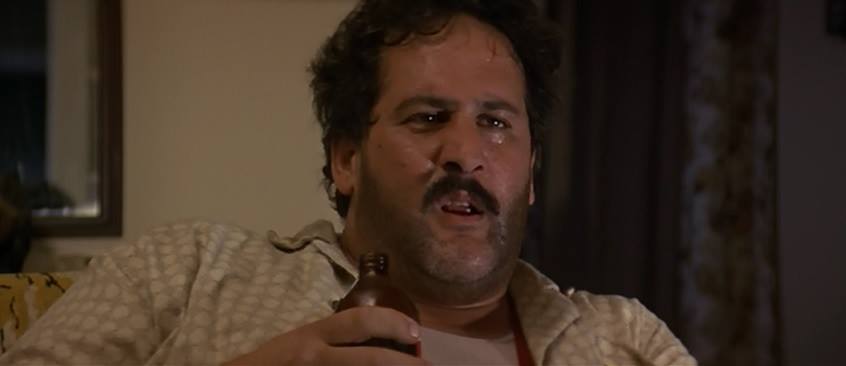
The Clunkiness
Aside from the unnecessary narration, the movie feels very episodic. The lack of transitions (or smooth transitions, at least) makes the film feel a little clunky. This discursive quality makes the movie feel a bit like a slasher movie with a werewolf as the slasher.
The film often moves from one stalk and kill sequence to another, each time telegraphing who the next victim is going to be. These are interspersed with a lot of scenes of characters talking to each other. The difference between Silver Bullet and your average slasher is that the dialogue and acting are far better here. However, it does affect the flow of the film, making it less smooth than it might have been.
It also doesn’t help that the movie does little to convey the passage of time. The events take place over several months but feel like they take place over a few days or maybe a week.
Overall though, these are relatively minor quibbles. Understandably, a horror movie in 1985 would take cues from the enormously successful slasher subgenre. And just to clarify, this absolutely blows the vast majority of slashers out of the water.
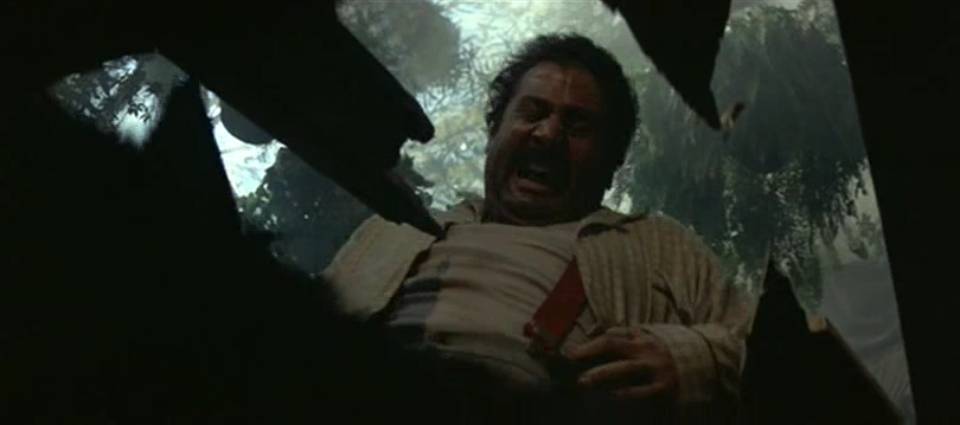
It Ain’t Much to Look At
Concerning how the film looks, for the most part it’s fairly uninteresting. It’s not awful, just kind of flat and bland. It’s certainly not particularly cinematic, and probably easily could have been a made for TV movie. This isn’t too surprising, considering the director, Daniel Attias, had worked exclusively in TV (and did so after this film, as well).
Interestingly, Don Coscarelli (Phantasm) was originally slated to direct and supposedly scenes shot by him are still in the film. It’s impossible to say, of course, but perhaps the movie would have ended up with a bit more visual flair had Coscarelli stayed on as director.
As it is though, it’s not a terrible looking film, it’s just not one where the directing and cinematography are front and center, and that’s okay.
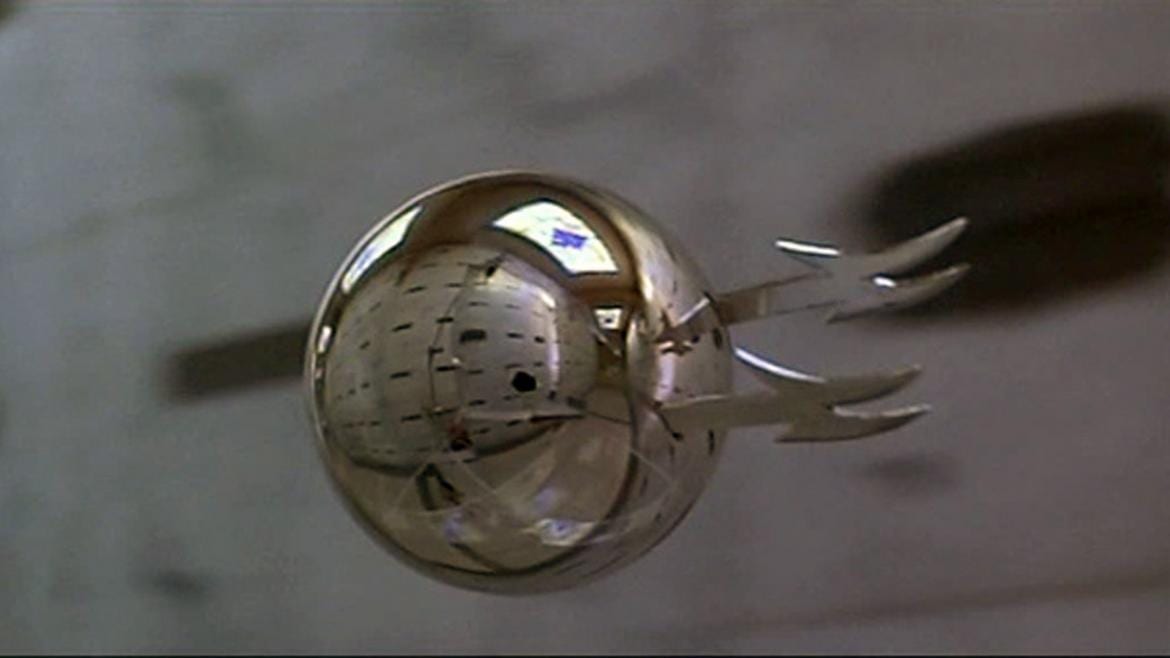
Cheesy Music
On the audio side of things, while the movie’s score is nothing groundbreaking, it’s largely effective. This is especially true during the werewolf on the prowl scenes when the music is appropriately ominous. At other times, things do get a bit cheesy. Marty’s theme, in its various iterations, is particularly cloying. However, I recognize that this did come out in 1985, so some cheese is perhaps unavoidable.
And while we’re talking cheese, Marty’s wheelchair being called “The Silver Bullet” is a little cheesy. If nothing else, it’s a bit on-the-nose. These two elements, the corny music and the wheelchair with the improbably apt nickname, come together in all their glory when we’re introduced to the new and improved “Bullet”. At this point, we’re treated to some classic 80’s cheez-rock as Marty takes his new ride for a spin. Again, I get it; it’s 1985. But, man, does that song suck.
Tonal Issues
The reason this cheesiness is significant is that it’s indicative of a larger problem the movie has with tone. Overall, the movie is a little confusing in terms of what exactly it’s going for and who it’s trying to appeal to. At times it feels like a PG-13 horror movie for kids, while at other times it’s very much an R-rated, full-bore horror film with blood and gore. It’s fair to say that the movie never quite manages to balance the two approaches. It’s also fair to say that it probably wasn’t a good idea to try to balance them in the first place. Doing so tends to mess with audiences’ expectations and perceptions, which is exactly what I think happened in this case.
For some, it wasn’t “horror” enough; for others, it was perhaps a bit too “horror”. The focus on a young protagonist makes it seem like it might be for kids and, in some ways, it is aimed at kids. But the truth is it’s too scary and violent for most young viewers (it certainly earns its R-rating). This puts it in a weird, in-between place that hurt its ability to connect with audiences as much as it might have. Make no mistake, I loved it as a kid, but it also scared the hell out of me.
Now, enough about what the film does wrong. What about what it does right?
The Players
In spite of these issues, I still quite enjoy this movie. I think its strengths far outweigh its weaknesses. One of the major strengths of the movie is its cast, who all turn in solid to great performances. Corey Haim and Gary Busey were the stars of the film and they’re both very good here (Busey essentially steals the show). Megan Follows is quite good as Jane, as is Everett McGill as Reverend Lowe. But some of the actors who didn’t receive top billing here turn in very great performances, as well. Terry O’Quinn (two years before The Stepfather and a couple of decades before Lost) as the sheriff and Kent Broadhurst as Herb Kincaid (Grady’s father) are particularly enjoyable.
Memorable Scenes
The scene in the bar featuring both O’Quinn and Broadhurst is excellent. This is the scene in which Sheriff Haller delivers the “private justice” monologue and Herb offers an embittered retort, turning the tables on the sheriff and wielding the phrase “private justice” against him. It’s one of the high points of the film. It’s one of several scenes in the film that—thanks to good writing and strong performances—would be great even if they were removed from the context of a werewolf movie or the horror genre.
There are other standout scenes as well, such as one in which Uncle Red and Marty’s mother argue after Marty has gone up to bed. In this scene, the adult sibling dynamic feels very real and it’s one that could easily have come from a family drama. Another great moment is the scene between Marty and Rev. Lowe in the condemned bridge. In this scene, Rev. Lowe is arguably more terrifying in fully human form than he is as a werewolf.
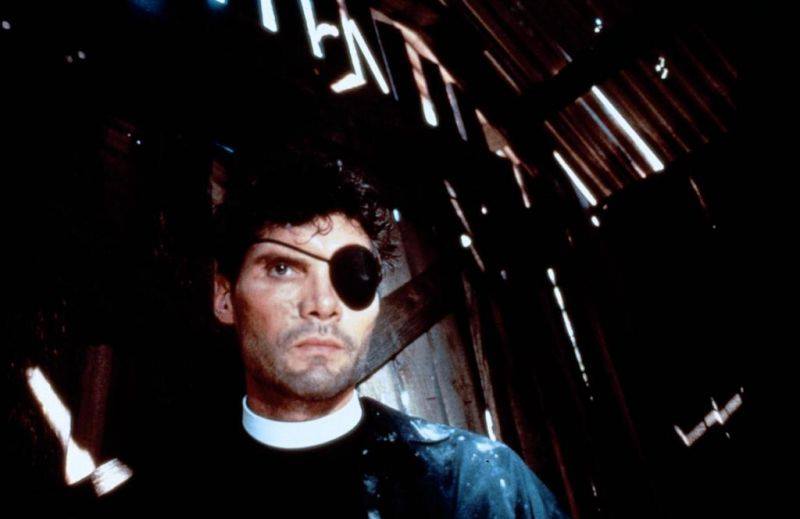
The Werewolf Isn’t That Bad
One of the major criticisms of Silver Bullet is one I didn’t mention in my discussion of the film’s flaws, and that is the appearance of the werewolf. This film has taken a lot of flack for the way the werewolf looks. I think a lot of this has to do with the fact that people were, and still are, comparing it to the two famous werewolf films that came out a few years before this: AWiL and The Howling.
These two films represent the pinnacle of onscreen werewolves. Both feature amazing transformations and impressive creature design (personally, I prefer the werewolves in The Howling over the one in AWiL). Nothing in Silver Bullet is on that level, but then neither is anything else that’s come out since those films. Furthermore, I’ve seen far worse looking werewolves in movies that came out after Silver Bullet, including a lot of bad CGI werewolves in more recent movies.
The major complaint I’ve heard is that the werewolf looks more like a bear. I suppose there’s some truth to this. I’ve never seen an actual werewolf and neither has anyone else. Maybe a werewolf could look a little like a bear. I mean, who really cares? Is a werebear not still scary? I will admit that when we see too much of the werewolf, it doesn’t look great. Not because of its aforementioned ursine quality, but because when we do get a good look at the werewolf, it does look very much like a guy wearing a hair suit with a big wolf/bear head on top.
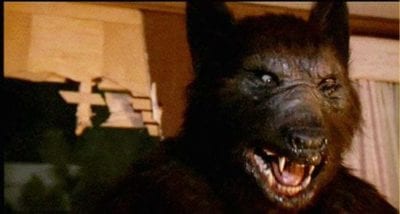
The (Wolf) Man Who Wasn’t There
What’s important to note, however, is that it isn’t until the end of the movie that this becomes a problem. For most of the film, we don’t see a lot of the werewolf. Throughout, the movie uses POV shots, framing, editing, and even conveniently placed fog to minimize how much of the creature we actually see. All of this works very much in the movie’s favor.
Now, I know there were issues during the movie’s production involving the producer Dino de Laurentiis not being happy with Carlo Rambaldi’s creature design, as well as disagreement over who was going to wear the costume in the movie. I have also read that King wanted the werewolf to be presented in a more indirect way, presumably to lend the film more suspense. Whatever the reason(s) for limiting how much of the creature we see, it’s effective. So, the complaint that the werewolf ruins the movie has always seemed a weak one to me.
The truth is, not seeing a lot of the werewolf for most of the movie actually makes it better. It’s smart filmmaking. If you know you don’t have top-notch practical effects, it makes perfect sense not to make them the focal point of the movie. I’ve even heard that John Landis wishes he had shown less of the werewolf in his film but was so enamored with Rick Baker’s work (understandably) that he couldn’t resist.
Anatomy of a (Werewolf) Murder
It’s particularly impressive that the movie is able to limit how much we see of the werewolf not just during stalking sequences, (when POV shots offer an easy solution), but even during attack scenes that don’t rely on POV. The scene when the werewolf kills the woman in her bedroom is an excellent example of this. The editing in this scene does a good job of conveying the viciousness of the attack without actually showing a lot. Instead, it relies on quick cuts, close-ups, and sound for its impact. In a way, it’s kind of like a minor version of the shower scene in Psycho.
Another thing I like in this scene is the intercutting of the mother downstairs playing the piano and then fumbling for the gun and making her way upstairs once she hears the commotion. Once the attack is over, the mother’s reaction to the aftermath is pretty believable. Again, we don’t see a lot, but we see enough. We see the mother in the background turn on the light, scream, and collapse against the doorframe. In the foreground, we see the woman’s body sprawled across the bed with her arms spread and blood on her nightgown and the sheets. At that moment, we fully understand the horror of what the mother has just walked in on.
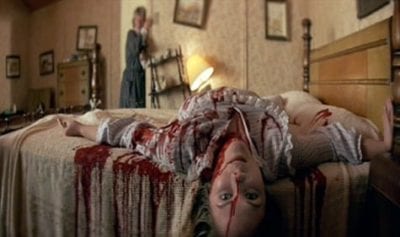
Later, the film conveys the horror of Marty’s friend Grady’s death with even less. It happens offscreen, with no gore and not even a body. The movie manages to convey everything entirely through small visual cues like a bloody kite, character reactions, and dialogue. At the risk of sounding overblown, it’s pretty powerful stuff.

Final Thoughts
To take a different risk, this time of stating the obvious, the ability to convey horror is one of the essential qualities of a good horror film. Other important qualities include the ability to present a monster—man, beast, or other—as a visceral threat and the capacity to be genuinely frightening. Silver Bullet manages to do all these things and not all horror films do.
The qualities we look for in films generally are a plot that keeps us engaged, characters that we care about, and dialogue and situations that have the ring of truth to them. I would argue that Silver Bullet accomplishes all these things. That last one—the ring of truth—is a particularly impressive achievement for a film with an inherently unrealistic premise.
Could it have been a better movie? Sure. But a lot of movies could have been better than they were. What’s important here is that it’s nowhere near as bad as the preponderance of negative reviews would have you believe. It’s easily the third-best werewolf movie of the ’80s, behind The Howling and AWiL. To be honest, though, I enjoy it more than AWiL, even if that is a better movie. And I may enjoy it as much as The Howling, even though that’s a better movie too.
Furthermore, while Dog Soldiers, Ginger Snaps, and The Wolf Man are also arguably better werewolf movies, I still enjoy Silver Bullet more. Now, I will accept that perhaps my enjoyment of it is slightly disproportionate to its actual quality. No doubt nostalgia plays some part in this. However, I do not accept that it is only nostalgia. It’s not a perfect film, but it’s also not just another so-bad-it’s-good, cheesy 80’s b-movie. It’s better than that and it deserves better.




Hi Joe-
First, thanks for taking the time to read the article and, beyond that, taking the time to respond. I was even younger than you when I first saw it and it definitely scared me too. I still think that parts of it are scary now. I usually watch it once a year in October, so I’ll likely be watching it again soon.
Just out of curiosity, how did you come across my review? Were you just searching on Silver Bullet? Anyway, I’ve got several other articles on the site, if you care to check any of those out. And, if you know any other people who like horror movies and enjoy reading other people’s takes on them, it would be great if you could send them this way. Thanks again for reading and commenting.
Best,
Corey
Hi Corey,
I have no real idea when you wrote this summation of silver bullet, but as I’ve only just read it, I’m just now responding with a couple thoughts. I too am a horror movie buff, mostly werewolf but i do love a good vampire flick too.
Silver bullet has always been and will always be my favorite werewolf movie, and I have no real issues with any of it, esp. The werewolf. I saw it when i was 12, and it scared the shit out of me. I fell in love that night with it. Everett McGill is terrifying, but what’s more frightening when you really think about the movie, is that the werewolf isn’t some mindless beast that wakes up human again after a good mauling. He had complete cognition while he’s doing these things based on complete memories, not some blackout drunk can’t remember what he did kind of night. Fully aware of his actions, non remorseful, and justifies his kills, ( at least a couple) even when professing to Marty what he’d done. That was the most terrifying part for me when i really thought about it.
The creature effects for me were great, and they haunted my dreams for years.
I just got done watching it again actually. Still love it after all these years.
Anyway, thought I’d respond as i stumbled across your review of the movie.
Take care,
Joe